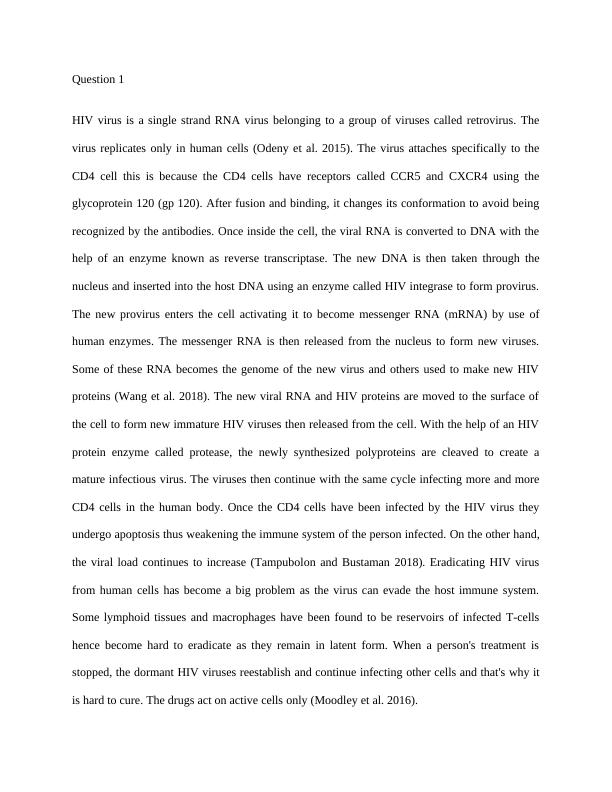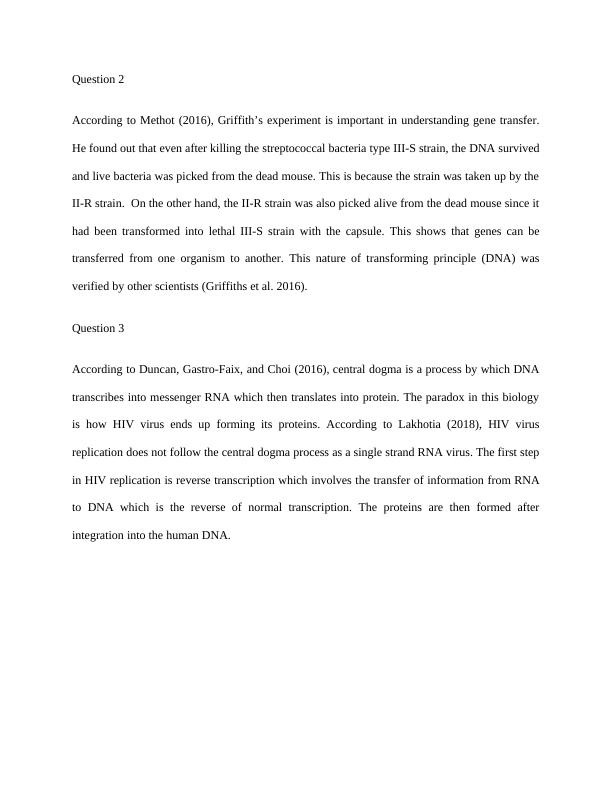HIV Virus Replication and Eradication
Added on 2023-04-07
4 Pages827 Words356 Views
End of preview
Want to access all the pages? Upload your documents or become a member.
HIV-AIDS: A Retroviral Disease and Management
|24
|1565
|82
Sample Assignment on HIV PDF
|10
|2169
|74
Viruses and their characteristics
|5
|738
|222
Microorganisms, Vector-borne Diseases, and Infection Prevention
|11
|4269
|432
Infection Prevention: Types of Microbiological Organisms, Vector-Borne Diseases, Defense Mechanisms, and Micro-Organism Control
|17
|6916
|360
Influenza A Viral Infection
|12
|910
|75


